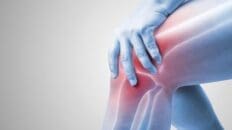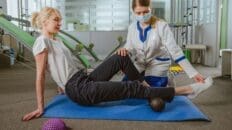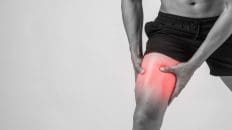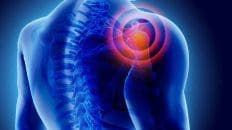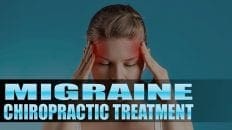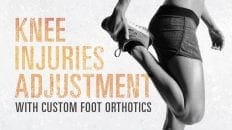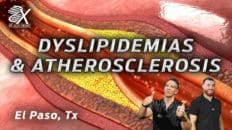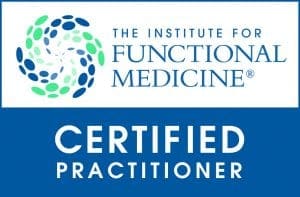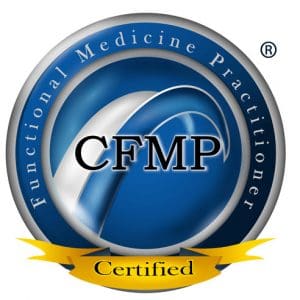Find out how good posture can be your solution to back pain. Enhance your well-being and comfort with simple adjustments.
Table of Contents
Chiropractic Care for Low Back Pain and the Importance of Good Posture
Introduction
Imagine trying to carry a heavy backpack with one strap slipping off your shoulder—your body twists, your back aches, and suddenly, every step feels like a chore. That’s what low back pain (LBP) can feel like for millions of people worldwide. In 2020, approximately 619 million people suffered from LBP, a number projected to climb to 843 million by 2050 due to aging populations and lifestyle changes (World Health Organization, 2023). As the leading cause of disability globally, LBP affects everything from work productivity to personal well-being. Fortunately, chiropractic care offers a non-invasive, evidence-based solution to manage this condition, and maintaining good posture can play a pivotal role in prevention and relief. In El Paso, Texas, Dr. Alexander Jimenez, a seasoned chiropractor, combines advanced techniques with a holistic approach to help patients find relief, particularly in personal injury cases. This comprehensive guide explores the clinical rationale for chiropractic care, the importance of posture, and Dr. Jimenez’s unique contributions to spinal health. Let’s embark on a journey to understand how to keep your back happy and pain-free!
References
- World Health Organization. (2023). Low back pain. Retrieved from https://www.who.int/news-room/fact-sheets/detail/low-back-pain
- International Association for the Study of Pain. (2021). The global burden of low back pain. Retrieved from https://www.iasp-pain.org/resources/fact-sheets/the-global-burden-of-low-back-pain/
Understanding Low Back Pain
Low back pain is defined as discomfort or pain in the lumbar region, the area between the lower ribs and the gluteal folds. It can manifest as a dull ache, sharp pain, or stiffness, and may be acute (lasting less than six weeks), subacute (6–12 weeks), or chronic (over three months). The condition is incredibly common, with a global prevalence of about 7.5% in 2017, affecting roughly 577 million people (International Association for the Study of Pain, 2021). By 2020, this number had increased to 619 million, and projections suggest a rise to 843 million by 2050, driven by population growth and aging (World Health Organization, 2023).
Causes and Risk Factors
Low back pain can arise from various sources, including:
- Mechanical Issues: Poor posture, muscle strains, or repetitive motions, like lifting heavy objects incorrectly, can strain the lumbar spine.
- Structural Problems: Conditions such as herniated discs, spinal stenosis, or degenerative disc disease can cause significant pain.
- Lifestyle Factors: Sedentary behavior, obesity, and lack of physical activity increase the risk of LBP.
- Injuries: Trauma from car accidents, falls, or sports injuries can lead to acute or chronic pain.
Women are more likely to experience LBP than men, and prevalence peaks between ages 50–55, with older adults (80–85) facing the highest disability impact (World Health Organization, 2023). Socioeconomic factors, such as lower income or occupational hazards, also contribute to higher rates of LBP (International Association for the Study of Pain, 2021).
Impact on Daily Life
LBP can turn everyday activities into daunting tasks. Imagine struggling to tie your shoes, sit through a movie, or even sleep comfortably. The condition is a leading cause of work-related disability, with nearly 65 million Americans reporting recent episodes of back pain (CDC, 2021). In occupational settings, LBP leads to significant lost workdays and reduced productivity, costing up to $200 billion annually in the U.S. alone (Harvard Health, 2019). Beyond physical limitations, LBP can cause emotional distress, including anxiety and depression, as individuals grapple with chronic discomfort and reduced quality of life.
References
- World Health Organization. (2023). Low back pain. Retrieved from https://www.who.int/news-room/fact-sheets/detail/low-back-pain
- International Association for the Study of Pain. (2021). The global burden of low back pain. Retrieved from https://www.iasp-pain.org/resources/fact-sheets/the-global-burden-of-low-back-pain/
- Centers for Disease Control and Prevention. (2021). Products – Data Briefs – Number 415. Retrieved from https://www.cdc.gov/nchs/products/databriefs/db415.htm
- Harvard Health. (2019). Should you see a chiropractor for low back pain? Retrieved from https://www.health.harvard.edu/blog/should-you-see-a-chiropractor-for-low-back-pain-2019073017412
The Role of the Lumbar Spine
The lumbar spine is like the sturdy foundation of a skyscraper, supporting the weight of your upper body while allowing flexibility for movement. Comprising five vertebrae (L1–L5), it’s designed to withstand significant forces, but when its structure is compromised, low back pain often follows.
Anatomy of the Lumbar Spine
The lumbar spine is located between the thoracic spine (mid-back) and the sacrum (base of the spine). Its key components include:
- Vertebrae: The five lumbar vertebrae are the largest and strongest in the spine, designed to bear the body’s weight.
- Intervertebral Discs: These act as shock absorbers, cushioning the vertebrae and allowing flexibility.
- Facet Joints: These small joints enable bending and twisting motions.
- Nerves: The cauda equina, a bundle of nerve roots, extends from the spinal cord’s end (around L1–L2) and transmits signals to the lower body.
- Muscles and Ligaments: These provide stability and support, with muscles like the erector spinae and ligaments connecting vertebrae to the pelvis.
The lumbar spine’s natural inward curve, called lordosis, helps distribute weight evenly and reduce stress. However, changes in this curve—due to poor posture or injury—can lead to pain (Spine-Health, 2020).
How It Relates to Low Back Pain
Disruptions in the lumbar spine’s structure or function can cause LBP. For example:
- Herniated Discs: A disc bulging or rupturing can press on nerves, causing pain that radiates to the legs (sciatica).
- Muscle Imbalances: Weak core muscles or tight hamstrings can strain the lumbar spine.
- Poor Posture: Slouching flattens the lordotic curve, increasing stress on discs and joints.
- Degenerative Conditions: Osteoarthritis or degenerative disc disease can lead to chronic pain.
The lumbar spine’s role in supporting daily activities—walking, lifting, sitting—makes it particularly vulnerable. Prolonged sitting, improper lifting, or repetitive motions can exacerbate these issues, leading to discomfort and reduced mobility (NCBI Bookshelf, 2023).
Impact on Daily Routine
A healthy lumbar spine allows you to bend, twist, and carry out tasks without pain. When compromised, even simple activities like getting out of bed or sitting at a desk can become challenging. For instance, a herniated disc at L4–L5, one of the most mobile segments, can cause pain that limits walking or standing, significantly affecting work and leisure activities (Spine-Health, 2020).
References
- Spine-Health. (2020). Lumbar spine anatomy and pain. Retrieved from https://www.spine-health.com/conditions/spine-anatomy/lumbar-spine-anatomy-and-pain
- NCBI Bookshelf. (2023). Anatomy, back, lumbar spine. Retrieved from https://www.ncbi.nlm.nih.gov/books/NBK557616/
Can Core Exercises Help With Back Pain- Video
Chiropractic Care for Low Back Pain
Chiropractic care is like a tune-up for your spine, helping it run smoothly without the need for invasive procedures or heavy medications. It focuses on the relationship between the spine and the nervous system, aiming to restore alignment and promote natural healing.
What Is Chiropractic Care?
Chiropractors use hands-on techniques, primarily spinal manipulation, to improve joint mobility and reduce nerve irritation. A typical adjustment involves applying controlled force to a specific spinal joint, often producing a harmless popping sound as gas is released from the joint. This process aims to restore proper movement, alleviate pain, and enhance overall function (Mayo Clinic, 2024).
How It Helps Low Back Pain
For low back pain, chiropractic adjustments target misalignments (subluxations) in the lumbar spine that may compress nerves or cause muscle tension. By realigning the spine, chiropractors reduce pressure on sensitive structures, improving mobility and reducing pain. Research supports this approach:
- A systematic review found that manual therapy, including chiropractic adjustments, significantly reduces pain and disability in acute and subacute LBP (Gianola et al., 2022).
- A 2018 study showed that chiropractic care, when added to usual medical care, led to greater pain relief and improved function in military personnel with LBP (Goertz et al., 2018).
- Chiropractic care is often more cost-effective than physical therapy, with lower average costs and higher patient satisfaction (Hawk et al., 2020).
Dr. Alexander Jimenez’s Approach
Dr. Alexander Jimenez, a chiropractor with over 30 years of experience in El Paso, Texas, takes a holistic approach to LBP. His clinic, Injury Medical Clinic PA, offers:
- Spinal Manipulation: To restore lumbar alignment and reduce nerve irritation.
- Functional Medicine: Addressing underlying causes through nutrition and lifestyle changes.
- Acupuncture and Electro-Acupuncture: To relieve pain and inflammation.
- Sports Medicine Principles: Exercises to strengthen core muscles and improve flexibility.
Dr. Jimenez’s personalized care plans focus on natural healing, avoiding unnecessary surgeries or medications. His approach is particularly effective for chronic LBP, where addressing root causes is critical (Injury Medical Clinic PA, n.d.).
Evidence and Considerations
While chiropractic care is generally safe, some studies note rare risks, such as temporary soreness or, in very rare cases, complications from neck manipulations (Mayo Clinic, 2024). It’s essential to discuss your medical history with your chiropractor to ensure safe treatment. The evidence leans toward chiropractic care being a valuable option for many, but it may not be suitable for all cases, such as those involving severe structural damage.
References
- Gianola, S., Bargeri, S., Del Castillo, G., et al. (2022). Effectiveness of treatments for acute and subacute mechanical non-specific low back pain: a systematic review with network meta-analysis. British Journal of Sports Medicine, 56(1), 41–50. Retrieved from https://bjsm.bmj.com/content/56/1/41
- Goertz, C. M., Long, C. R., Vining, R. D., et al. (2018). Effect of usual medical care plus chiropractic care vs usual medical care alone on pain and disability among US service members with low back pain. JAMA Network Open, 1(1), e180002. Retrieved from https://jamanetwork.com/journals/jamanetworkopen/fullarticle/2680417
- Hawk, C., Whalen, W., Farabaugh, R. J., et al. (2020). Treatment of patients with low back pain: A comparison of physical therapy and chiropractic manipulation. Healthcare, 8(1), 44. Retrieved from https://pmc.ncbi.nlm.nih.gov/articles/PMC7151187/
- Mayo Clinic. (2024). Chiropractic adjustment. Retrieved from https://www.mayoclinic.org/tests-procedures/chiropractic-adjustment/about/pac-20393513
- Injury Medical Clinic PA. (n.d.). Comprehensive family practice and chiropractic care. Retrieved from https://www.dralexjimenez.com/
The Importance of Good Posture
Good posture is like having a personal bodyguard for your spine—it’s always there, protecting you from strain and keeping you balanced. Proper posture supports the spine’s natural curves, reducing stress on muscles, ligaments, and discs, which can prevent and alleviate low back pain.
What Is Good Posture?
Good posture involves maintaining the spine’s natural S-shaped curve, particularly the lumbar lordosis, during standing, sitting, or lying down. It means keeping your head aligned with your spine, shoulders back, and weight evenly distributed. For example, when standing, your feet should be shoulder-width apart, knees slightly bent, and abdominal muscles engaged to support the lower spine (El Paso Back Clinic, n.d.).
How Poor Posture Contributes to Low Back Pain
Slouching or hunching forward can flatten the lumbar curve, increasing pressure on discs and joints. Over time, this can lead to:
- Muscle Imbalances: Weak core muscles and tight hamstrings strain the lumbar spine.
- Disc Stress: Poor alignment increases wear and tear on intervertebral discs.
- Nerve Compression: Misaligned vertebrae can irritate nerves, causing pain or sciatica.
Research highlights that poor posture is a significant risk factor for LBP, particularly in sedentary lifestyles (ScienceDirect Topics, n.d.).
Techniques for Maintaining Good Posture
Here are practical tips to keep your spine happy:
- Standing: Keep shoulders back, head level, and feet shoulder-width apart. Try the wall test: stand with your back against a wall, ensuring your head, shoulders, and buttocks touch it, with a small space at the lower back.
- Sitting: Use a chair with lumbar support, keep feet flat, and avoid crossing legs. Adjust your monitor to eye level to prevent slouching.
- Lying Down: Sleep on your side with a pillow between your knees or on your back with a pillow under your knees.
- Ergonomics: Set up your workspace to minimize strain, with keyboards at elbow height and chairs supporting the lower back.
Benefits of Good Posture
- Reduced Spinal Stress: Even weight distribution minimizes strain on lumbar structures.
- Improved Stability: Strong core muscles enhance balance and reduce injury risk.
- Enhanced Function: Better posture improves mobility and reduces fatigue.
By incorporating these habits, you can significantly lower your risk of developing LBP and improve overall spinal health.
References
- El Paso Back Clinic. (n.d.). Practicing good posture can relieve back pain. Retrieved from https://elpasobackclinic.com/practicing-good-posture-can-relieve-back-pain/
- ScienceDirect Topics. (n.d.). Postural assessment. Retrieved from https://www.sciencedirect.com/topics/medicine-and-dentistry/postural-assessment
- PubMed. (n.d.). Spinal posture assessment and low back pain. Retrieved from https://pubmed.ncbi.nlm.nih.gov/36963709/
Therapeutic Techniques for Relieving Low Back Pain
Chiropractic care often goes beyond adjustments, incorporating a variety of therapeutic techniques to address low back pain comprehensively. These methods aim to reduce pain, improve function, and prevent recurrence.
Overview of Techniques
- Spinal Manipulation: High-velocity, low-amplitude thrusts to restore joint mobility.
- Soft Tissue Therapy: Massages or myofascial release to relax tight muscles and reduce inflammation.
- Exercise Therapy: Tailored exercises to strengthen core muscles and improve flexibility.
- Acupuncture: Stimulating specific points to alleviate pain and promote healing.
- Electro-Acupuncture: Combining acupuncture with electrical stimulation for enhanced effects.
Research supports these methods, with exercise therapy showing long-term benefits for chronic LBP and acupuncture providing short-term pain relief (Hayden et al., 2021; Deyo et al., 2014).
Dr. Jimenez’s Techniques
Dr. Alexander Jimenez integrates a range of therapies at his El Paso clinic:
- Functional Medicine: Addressing root causes through nutrition, lifestyle, and environmental factors.
- Acupuncture and Electro-Acupuncture: Targeting pain and inflammation directly.
- Sports Medicine Principles: Using exercises like pelvic tilts and bird-dog to enhance core stability and spinal health.
His approach emphasizes personalized care plans that promote natural healing and long-term wellness, often avoiding the need for medications or surgery (Injury Medical Clinic PA, n.d.).
Evidence Supporting These Techniques
- Exercise Therapy: A Cochrane review found that exercise reduces pain and improves function in chronic LBP (Hayden et al., 2021).
- Acupuncture: Studies suggest acupuncture can provide short-term relief for chronic LBP, particularly when combined with other therapies (Deyo et al., 2014).
- Spinal Manipulation: Effective for acute and subacute LBP, with moderate to high certainty of evidence (Gianola et al., 2022).
| Therapeutic Technique | Primary Benefit | Evidence Level |
|---|---|---|
| Spinal Manipulation | Pain relief, improved mobility | High (Gianola et al., 2022) |
| Exercise Therapy | Long-term pain reduction, improved function | Strong (Hayden et al., 2021) |
| Acupuncture | Short-term pain relief | Moderate (Deyo et al., 2014) |
| Soft Tissue Therapy | Muscle relaxation, reduced inflammation | Moderate (Deyo et al., 2014) |
References
- Hayden, J. A., et al. (2021). Exercise therapy for chronic low back pain. Cochrane Library. Retrieved from https://www.cochranelibrary.com/cdsr/doi/10.1002/14651858.CD009790.pub2/full
- Deyo, R. A., et al. (2014). Management of chronic low back pain. JAMA. Retrieved from https://pubmed.ncbi.nlm.nih.gov/36963709/
- Gianola, S., et al. (2022). Effectiveness of treatments for acute and subacute mechanical non-specific low back pain. British Journal of Sports Medicine. Retrieved from https://bjsm.bmj.com/content/56/1/41
- Injury Medical Clinic PA. (n.d.). Comprehensive family practice and chiropractic care. Retrieved from https://www.dralexjimenez.com/
Personal Injury and Chiropractic Care
Chiropractic care plays a vital role in personal injury cases, such as those resulting from car accidents, workplace injuries, or slips and falls. These incidents often cause spinal misalignments or soft tissue injuries that lead to low back pain, making chiropractic intervention essential for recovery.
Role in Personal Injury Cases
Chiropractors assess and treat injuries using non-invasive methods, providing:
- Accurate Diagnosis: Using advanced imaging (e.g., MRI, CT scans) and physical exams to identify the extent of injuries.
- Effective Treatment: Spinal adjustments, soft tissue therapy, and rehabilitation exercises to promote healing.
- Legal Documentation: Detailed medical reports that support personal injury claims by documenting the injury’s impact and treatment progress.
Dr. Alexander Jimenez’s Expertise
Dr. Alexander Jimenez, with over 30 years of experience, is a distinguished practitioner in El Paso, Texas, known for his expertise in personal injury cases. He uses advanced imaging and diagnostic evaluations to assess injuries accurately, ensuring precise treatment plans. His role as a liaison between medical and legal services is particularly valuable, as he provides comprehensive documentation that supports legal claims while prioritizing patient recovery (Jimenez, n.d.). His clinic’s integration of chiropractic care, functional medicine, and rehabilitation makes it a go-to resource for personal injury victims.
Advanced Imaging and Diagnostics
Dr. Jimenez employs tools like:
- MRI and CT Scans: To visualize spinal structures and identify issues like herniated discs or fractures.
- X-rays: To assess bone alignment and detect subtle injuries.
- Dual-Scope Procedures: Combining diagnostic techniques to provide a complete picture of the injury.
These methods ensure accurate diagnoses and effective treatment plans, which are critical for both patient recovery and legal proceedings (Injury Medical Clinic PA, n.d.).
References
- Jimenez, A. (n.d.). LinkedIn profile. Retrieved from https://www.linkedin.com/in/dralexjimenez/
- Injury Medical Clinic PA. (n.d.). Comprehensive family practice and chiropractic care. Retrieved from https://www.dralexjimenez.com/
Conclusion
Low back pain is a complex and widespread condition, but chiropractic care offers a promising, non-invasive solution. By addressing spinal misalignments and incorporating therapies like acupuncture and exercise, chiropractors like Dr. Alexander Jimenez help patients find relief and improve their quality of life. Good posture plays a crucial role in preventing LBP, acting as a foundation for spinal health. In personal injury cases, Dr. Jimenez’s expertise in advanced diagnostics and legal documentation ensures comprehensive care and support for patients. If you’re struggling with low back pain, seeking professional chiropractic care could be a game-changer. Always consult a qualified healthcare provider to determine the best treatment plan for your specific needs.
Disclaimer: This blog post is for informational purposes only and does not constitute medical advice. Consult a healthcare professional for diagnosis and treatment of any medical condition.
References
- World Health Organization. (2023). Low back pain. Retrieved from https://www.who.int/news-room/fact-sheets/detail/low-back-pain
- International Association for the Study of Pain. (2021). The global burden of low back pain. Retrieved from https://www.iasp-pain.org/resources/fact-sheets/the-global-burden-of-low-back-pain/
- Spine-Health. (2020). Lumbar spine anatomy and pain. Retrieved from https://www.spine-health.com/conditions/spine-anatomy/lumbar-spine-anatomy-and-pain
- Gianola, S., et al. (2022). Effectiveness of treatments for acute and subacute mechanical non-specific low back pain. British Journal of Sports Medicine. Retrieved from https://bjsm.bmj.com/content/56/1/41
- Goertz, C. M., et al. (2018). Effect of usual medical care plus chiropractic care vs usual medical care alone on pain and disability among US service members with low back pain. JAMA Network Open. Retrieved from https://jamanetwork.com/journals/jamanetworkopen/fullarticle/2680417
- El Paso Back Clinic. (n.d.). Practicing good posture can relieve back pain. Retrieved from https://elpasobackclinic.com/practicing-good-posture-can-relieve-back-pain/
- Hayden, J. A., et al. (2021). Exercise therapy for chronic low back pain. Cochrane Library. Retrieved from https://www.cochranelibrary.com/cdsr/doi/10.1002/14651858.CD009790.pub2/full
- Deyo, R. A., et al. (2014). Management of chronic low back pain. JAMA. Retrieved from https://pubmed.ncbi.nlm.nih.gov/36963709/
- Jimenez, A. (n.d.). LinkedIn profile. Retrieved from https://www.linkedin.com/in/dralexjimenez/
General Disclaimer
Professional Scope of Practice *
The information herein on "Good Posture: Understanding the Causes for Back Pain" is not intended to replace a one-on-one relationship with a qualified health care professional or licensed physician and is not medical advice. We encourage you to make healthcare decisions based on your research and partnership with a qualified healthcare professional.
Blog Information & Scope Discussions
Welcome to El Paso's Premier Wellness and Injury Care Clinic & Wellness Blog, where Dr. Alex Jimenez, DC, FNP-C, a Multi-State board-certified Family Practice Nurse Practitioner (FNP-BC) and Chiropractor (DC), presents insights on how our multidisciplinary team is dedicated to holistic healing and personalized care. Our practice aligns with evidence-based treatment protocols inspired by integrative medicine principles, similar to those found on this site and our family practice-based chiromed.com site, focusing on restoring health naturally for patients of all ages.
Our areas of multidisciplinary practice include Wellness & Nutrition, Chronic Pain, Personal Injury, Auto Accident Care, Work Injuries, Back Injury, Low Back Pain, Neck Pain, Migraine Headaches, Sports Injuries, Severe Sciatica, Scoliosis, Complex Herniated Discs, Fibromyalgia, Chronic Pain, Complex Injuries, Stress Management, Functional Medicine Treatments, and in-scope care protocols.
Our information scope is multidisciplinary, focusing on musculoskeletal and physical medicine, wellness, contributing etiological viscerosomatic disturbances within clinical presentations, associated somato-visceral reflex clinical dynamics, subluxation complexes, sensitive health issues, and functional medicine articles, topics, and discussions.
We provide and present clinical collaboration with specialists from various disciplines. Each specialist is governed by their professional scope of practice and their jurisdiction of licensure. We use functional health & wellness protocols to treat and support care for musculoskeletal injuries or disorders.
Our videos, posts, topics, and insights address clinical matters and issues that are directly or indirectly related to our clinical scope of practice.
Our office has made a reasonable effort to provide supportive citations and has identified relevant research studies that support our posts. We provide copies of supporting research studies upon request to regulatory boards and the public.
We understand that we cover matters that require an additional explanation of how they may assist in a particular care plan or treatment protocol; therefore, to discuss the subject matter above further, please feel free to ask Dr. Alex Jimenez, DC, APRN, FNP-BC, or contact us at 915-850-0900.
We are here to help you and your family.
Blessings
Dr. Alex Jimenez DC, MSACP, APRN, FNP-BC*, CCST, IFMCP, CFMP, ATN
email: coach@elpasofunctionalmedicine.com
Multidisciplinary Licensing & Board Certifications:
Licensed as a Doctor of Chiropractic (DC) in Texas & New Mexico*
Texas DC License #: TX5807, Verified: TX5807
New Mexico DC License #: NM-DC2182, Verified: NM-DC2182
Multi-State Advanced Practice Registered Nurse (APRN*) in Texas & Multistate
Multistate Compact RN License by Endorsement (42 States)
Texas APRN License #: 1191402, Verified: 1191402 *
Florida APRN License #: 11043890, Verified: APRN11043890 *
* Prescriptive Authority Authorized
ANCC FNP-BC: Board Certified Nurse Practitioner*
Compact Status: Multi-State License: Authorized to Practice in 40 States*
Graduate with Honors: ICHS: MSN-FNP (Family Nurse Practitioner Program)
Degree Granted. Master's in Family Practice MSN Diploma (Cum Laude)
Dr. Alex Jimenez, DC, APRN, FNP-BC*, CFMP, IFMCP, ATN, CCST
My Digital Business Card
RN: Registered Nurse
APRNP: Advanced Practice Registered Nurse
FNP: Family Practice Specialization
DC: Doctor of Chiropractic
CFMP: Certified Functional Medicine Provider
MSN-FNP: Master of Science in Family Practice Medicine
MSACP: Master of Science in Advanced Clinical Practice
IFMCP: Institute of Functional Medicine
CCST: Certified Chiropractic Spinal Trauma
ATN: Advanced Translational Neutrogenomics








